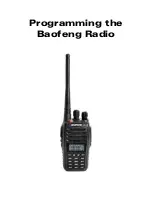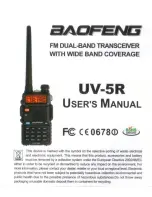RV-8 Service Manual
Main composite video CVID_MAIN1 is driven by U38. Luma and chroma from the input amplifiers are
summed by R211 and R212, scaled by ½ and the result is amplified by U38, which has a gain of two.
With composite input, there is no chroma, and the result is simply the composite video. With S-video
input, the result is the composite version of the S-video, the sum of Y+C. The internal U38 multiplexer
selects whether the OSD is in the path or whether the input is fed straight through, controlled by MTHRU/.
Output impedance is structured as with the main luma output.
Main composite video CVID_MAIN2 is driven by U5. Luma and chroma from the input amplifiers are
summed by R126 and R127, scaled by 1/2, and the result is amplified by U5, which has a gain of two.
CVID_MAIN2 is not subject to the OSD.
Standard 1Vp-p video input levels produce 1Vp-p output on the composite and luminance channels when
terminated in 75 ohms, or 2Vp-p open circuit. The composite main outputs are fed to the output rca jacks
on the Video Out board via ribbon cable J16.
Zone2 Composite / S-video (Video board schematic sheet 3)
Zone2 functionality in the RV-8 corresponds to Record functionality in previous products, and the
nomenclature reflects this legacy. In many places, the “record” nomenclature has been retained to
correspond with the software base, but from the user perspective, this circuitry drives Zone2. Zone2 video
circuitry is structured similarly to main video, but without OSD capability. Refer to the previous section for
additional description. Multiplexers U10 and U11/U12 are addressed by the RECVID_SELn and
RECSVID_SELn bits respectively to select an independent zone 2 (record) source, but otherwise operate
like their counterparts in the main path. There is no dc-restorer in the zone2 path, so back-porch dc-level
varies with average picture level due to input ac-coupling. The multiplexer internal to output amplifier U17
allows the zone2 S-video luminance to be shut off when a composite source is in use. Multiplexer U13
feeds the input dc voltage to the dc amplifier formed by Q2, Q3, and Q1, to transfer dc voltage on the
chroma input to the chroma output for S-video switching purposes. The Zone2 composite output from
U18 feeds two 75-ohm outputs, connecting to rca jacks on the Video Out board via ribbon cable J16.
Zone3 Composite video (Video board schematic sheet 4)
Zone3 is an additional video path in the RV-8 which provides one composite video output. Zone 3 video
functionality corresponds to zone2 audio functionality in previous products and the signal-naming
nomenclature reflects this legacy. Signals on the schematic refer to zone2, but this is zone 3 from the
user perspective and rear-panel labeling. Multiplexers U9 and U7/U8 are addressed by the Z2VID_SELn
and Z2SVID_SELn bits respectively to select an independent zone 3 source, but otherwise operate like
their counterparts in the main path. There is no dc-restorer in the zone3 path, so back-porch dc-level
varies with average picture level due to input ac-coupling. Refer to the composite video description in the
previous sections for additional information. The zone3 composite output from U5 feeds the Zone 3
VIDEO rca jack on the Main Board via cable J20 (sheet 10).
Video Converter (Video board schematic sheet 5)
Composite or S-video inputs can be decoded and converted to component analog video output in the Y
Pb Pr format by video codec U34. U34 combines the functionality of a video decoder and encoder
(codec). U34 accepts the selected main composite or s-video source on two analog input pairs, AI1 and
AI2. AI1 is taken after the input amplifiers but before the OSD, while AI2 is subject to the OSD. Within
U34, the inputs are dc-restored and converted to digital form for decoding. The decoded digital video is
passed via the PDn bus to the encoder portion of the codec to be re-encoded. The encoder incorporates
3 d-a converters for producing Y,Pb,Pr component analog video. The analog outputs from the encoder
are filtered and buffered by U4 and U3 (sheet 6). The dc-level of the Y component is biased to place the
back-porch around 0Vdc, and the dc-level of the Pb and Pr components is biased to place the 0 color-
6-52
Summary of Contents for RV-8
Page 8: ......
Page 18: ...RV 8 Service Manual 3 6 ...
Page 54: ......
Page 76: ......
Page 132: ......
Page 156: ......
Page 157: ......
Page 158: ......
Page 159: ......
Page 160: ......
Page 161: ......
Page 162: ......
Page 163: ......
Page 164: ......
Page 165: ......
Page 166: ......
Page 167: ......
Page 168: ......
Page 169: ......
Page 170: ......
Page 171: ......
Page 172: ......
Page 173: ......
Page 174: ......
Page 175: ......
Page 176: ......
Page 177: ......
Page 178: ......
Page 179: ......
Page 180: ......
Page 181: ......
Page 182: ......
Page 183: ......
Page 184: ......
Page 185: ......
Page 246: ......
Page 247: ......


















